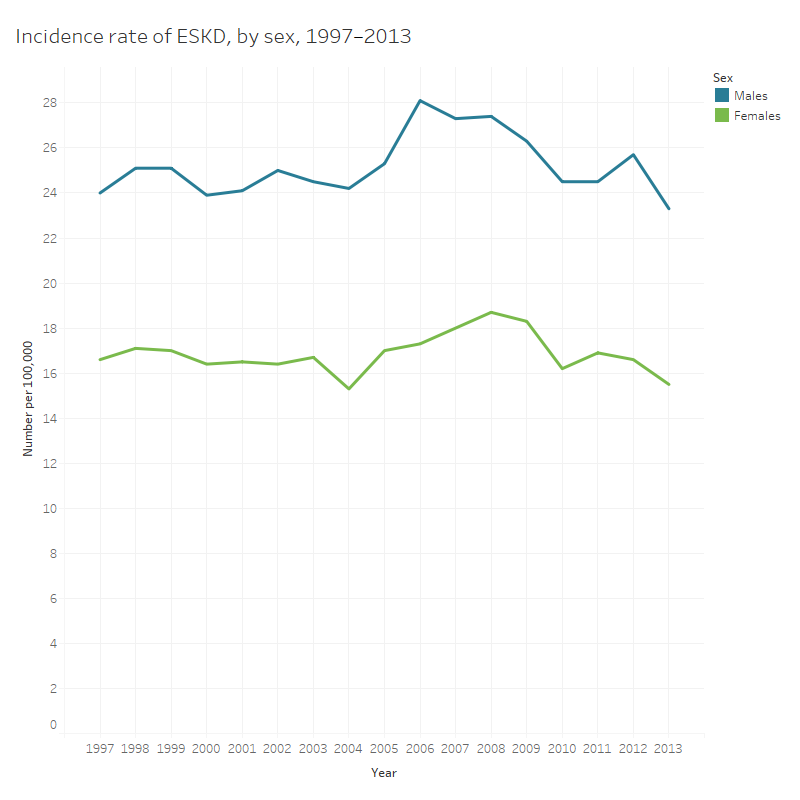Incidence of end-stage kidney disease
Definition: Number of new cases of treated end-stage kidney disease (ESKD) plus number of individuals who died with: an underlying cause of death of ‘chronic kidney failure’, ‘hypertensive kidney failure’ or ‘unspecified kidney failure’; or an associated cause of death of ‘chronic renal failure, end-stage’, and did not receive dialysis or transplant treatment (untreated cases), per 100,000 population.

Sources: Linked Australia and New Zealand Dialysis and Transplant Registry, National Mortality Database and National Death Index; Table S1.4.4.
- In 2013, there were 5,100 new cases of ESKD, equating to an age-standardised rate of 19 per 100,000 people. The ESKD incidence rate was 1.5 times as high for males as for females (23 compared with 16 per 100,000 people).
- Between 1997 and 2013, the rate of new cases of ESKD fluctuated between 19 and 23 per 100,000 people. Over the same period the number of new cases increased by 51% (from 3,400 cases in 1997 to 5,100 in 2013).
- The incidence rate increased with age for both males and females. In 2013, the rate of ESKD was highest for those aged 75 and over (179 per 100,000 people)—this rate was 7 times as high as the rate for those aged 55–64 (26 per 100,000).
- In 2009–2013, the age-standardised ESKD incidence rate for Aboriginal and Torres Strait Islander people (based on data from New South Wales, Queensland, Western Australia, South Australia and the Northern Territory) was 95 per 100,000 people. This was 5 times the rate for non-Indigenous people (19 new cases per 100,000 people).
For more information, see Chapter 3.9 'Chronic kidney disease'.


